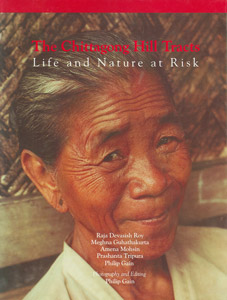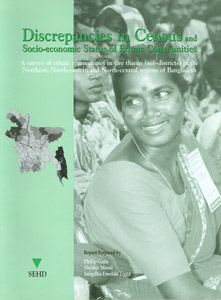
The Chittagong Hill Tracts: Life and Nature at Risk
Information, analysis, photographs and arguments on how land, life and nature in the Chittagong Hill Tracts are at risk today.
2000, English, 121 pages, Hardback | Tk.500 / US$20
The Chittagong Hill Tracts (CHT), which is 5,093 sq. miles in extent or 10% of Bangladesh, is a unique territory. While most of the country is flat and a few feet above the sea level, the CHT in the southeast is mountainous with beautiful landscapes. The indigenous hill peoples are also unique with their distinct and different cultures.
Once noted for its ‘majestic natural beauty’, the region has lost much of its original landscape because of ill-conceived development initiatives and human greed. Most of the hills that were covered with thick forests now lie denuded or covered sparsely with bushes and small trees. To many it is no more than a hill park.
The factors that have contributed to this sorry state of the region include: the Kaptai Hydroelectricity Project that has created a massive lake, occupation of the traditional homeland of the indigenous peoples and their subsequent massive displacement, plantations of exotic species, in-migration of the Bengalis, heavy military presence for about three decades, etc. Immoral human actions have broken the chain of nature and put life at risk. One can still be charmed by the spectacular scenic beauty of the Kaptai Lake and the mountain landscapes but this beauty cannot hide the catastrophe caused to the hill people.
In the book, The Chittagong Hill Tracts: Life and Nature at Risk, a host of writers present information, analyses, photographs and arguments on how land, life and nature in the Chittagong Hill Tracts are at risk today. This book intends to provide basic information on the Chittagong Hill Tracts and stimulate discussion around critical issues. It also enhances understanding about the CHT’s unique legal and administrative system that has no parallel in other parts of Bangladesh.
Publication Details
Published: 2000
Language: English
Hardback: 121 pages
Editor: Philip Gain
Price: Tk.500 / US$20

